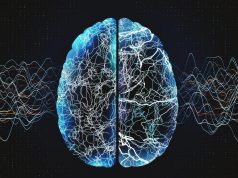CMR is better for reducing unnecessary angiography compared with NICE guideline-directed care
WEDNESDAY, Aug. 31, 2016 (HealthDay News) — Investigation of suspected coronary heart disease (CHD) with cardiovascular magnetic resonance (CMR)-guided care is superior to National Institute for Health and Care Excellence (NICE) guidelines-directed care and does not differ significantly from myocardial perfusion scintigraphy (MPS)-guided care, according to a study published online Aug. 29 in the Journal of the American Medical Association. The research was published to coincide with the annual European Society of Cardiology Congress, held from Aug. 27 to 31 in Rome.
John P. Greenwood, Ph.D., from the University of Leeds in the United Kingdom, and colleagues randomized 1,202 symptomatic patients with suspected CHD to management according to UK NICE guidelines or to guided care based on the results of CMR or MPS testing (240:481:481).
The researchers found that after 12 months, 42.5, 17.7, and 16.2 percent of patients in the NICE guidelines group, MPS group, and CMR group, respectively, had invasive coronary angiography. Study-defined unnecessary angiography occurred in 28.8, 7.5, and 7.1, percent of the NICE guidelines, CMR, and MPS groups, respectively; the adjusted odds ratio for unnecessary angiography was 0.21 (95 percent confidence interval, 0.12 to 0.34) for CMR versus NICE guidelines and 1.27 (95 percent confidence interval, 0.79 to 2.03) for CMR versus MPS.
“Noninvasive functional imaging strategies reduced unnecessary angiography compared with guidelines-directed care,” the authors write
One author disclosed financial ties to the health care and medical device industries.
Copyright © 2016 HealthDay. All rights reserved.








